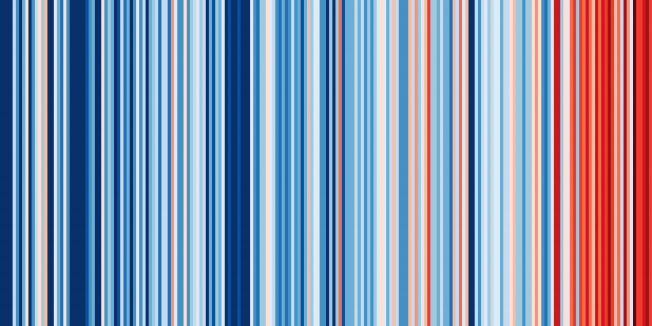Impact of snow initialization on sub-seasonal forecasts
Climate Dynamics (2013) 1-14
Abstract:
The influence of the snowpack on wintertime atmospheric teleconnections has received renewed attention in recent years, partially for its potential impact on seasonal predictability. Many observational and model studies have indicated that the autumn Eurasian snow cover in particular, influences circulation patterns over the North Pacific and North Atlantic. We have performed a suite of coupled atmosphere-ocean simulations with the European Centre for Medium-Range Weather Forecasts (ECMWF) ensemble forecast system to investigate the impact of accurate snow initialisation. Pairs of 2-month ensemble forecasts were started every 15 days from the 15th of October through the 1st of December in the years 2004-2009, with either realistic initialization of snow variables based on re-analyses, or else with "scrambled" snow initial conditions from an alternate autumn date and year. Initially, in the first 15 days, the presence of a thicker snowpack cools surface temperature over the continental land masses of Eurasia and North America. At a longer lead of 30-day, it causes a warming over the Arctic and the high latitudes of Eurasia due to an intensification and westward expansion of the Siberian High. It also causes a cooling over the mid-latitudes of Eurasia, and lowers sea level pressures over the Arctic. This "warm Arctic-cold continent" difference means that the forecasts of near-surface temperature with the more realistic snow initialization are in closer agreement with re-analyses, reducing a cold model bias over the Arctic and a warm model bias over mid-latitudes. The impact of realistic snow initialization upon the forecast skill in snow depth and near-surface temperature is estimated for various lead times. Following a modest skill improvement in the first 15 days over snow-covered land, we also find a forecast skill improvement up to the 30-day lead time over parts of the Arctic and the Northern Pacific, which can be attributed to the realistic snow initialization over the land masses. © 2013 Springer-Verlag Berlin Heidelberg.Reliability of decadal predictions
Geophysical Research Letters 39:21 (2012)
Abstract:
The reliability of multi-year predictions of climate is assessed using probabilistic Attributes Diagrams for near-surface air temperature and sea surface temperature, based on 54 member ensembles of initialised decadal hindcasts using the ECMWF coupled model. It is shown that the reliability from the ensemble system is good over global land areas, Europe and Africa and for the North Atlantic, Indian Ocean and, to a lesser extent, North Pacific basins for lead times up to 6-9years. North Atlantic SSTs are reliably predicted even when the climate trend is removed, consistent with the known predictability for this region. By contrast, reliability in the Indian Ocean, where external forcing accounts for most of the variability, deteriorates severely after detrending. More conventional measures of forecast quality, such as the anomaly correlation coefficient (ACC) of the ensemble mean, are also considered, showing that the ensemble has significant skill in predicting multi-annual temperature averages. © 2012. American Geophysical Union. All Rights Reserved.Assessment of representations of model uncertainty in monthly and seasonal forecast ensembles
Geophysical Research Letters 38:16 (2011)
Abstract:
The probabilistic skill of ensemble forecasts for the first month and the first season of the forecasts is assessed, where model uncertainty is represented by the a) multi-model, b) perturbed parameters, and c) stochastic parameterisation ensembles. The main foci of the assessment are the Brier Skill Score for near-surface temperature and precipitation over land areas and the spread-skill relationship of sea surface temperature in the tropical equatorial Pacific. On the monthly timescale, the ensemble forecast system with stochastic parameterisation provides overall the most skilful probabilistic forecasts. On the seasonal timescale the results depend on the variable under study: for near surface temperature the multi-model ensemble is most skilful for most land regions and for global land areas. For precipitation, the ensemble with stochastic parameterisation most often produces the highest scores on global and regional scales. Our results indicate that stochastic parameterisations should now be developed for multi-decadal climate predictions using earth-system models. Copyright 2011 by the American Geophysical Union.On the predictability of the extreme summer 2003 over Europe
Geophysical Research Letters 38:5 (2011)
Abstract:
The European summer 2003 is a prominent example for an extreme hot and dry season. The main mechanisms that contributed to the growth of the heat wave are still disputed and state-of-the-art climate models have difficulty to realistically simulate the extreme conditions. Here we analyse simulations using recent versions of the European Centre for Medium-Range Weather Forecasts seasonal ensemble forecasting system and present, for the first time, retrospective forecasts which simulate accurately not only the abnormal warmth but also the observed precipitation and mid-tropospheric circulation patterns. It is found that while the land surface hydrology plays a crucial role, the successful simulations also required revised formulations of the radiative and convective parameterizations. We conclude that the predictability of the event was less due to remote teleconnections effects and more due to in situ processes which helped maintain the dry surface anomalies occurring at the beginning of the summer. Copyright 2011 by the American Geophysical Union.Diagnosing the causes of bias in climate models - why is it so hard?
Geophysical and Astrophysical Fluid Dynamics 105:2-3 (2011) 351-365



